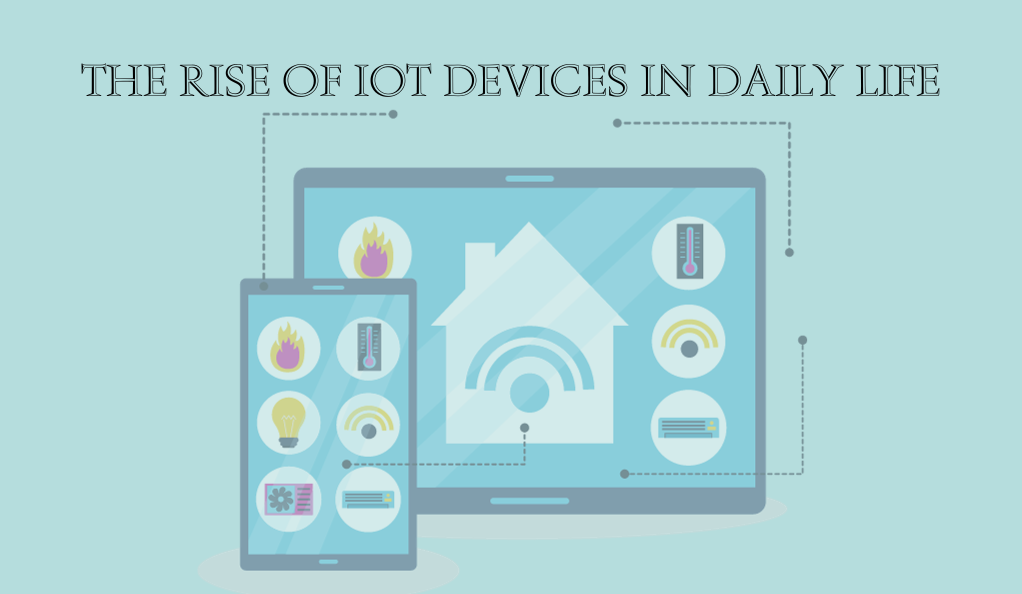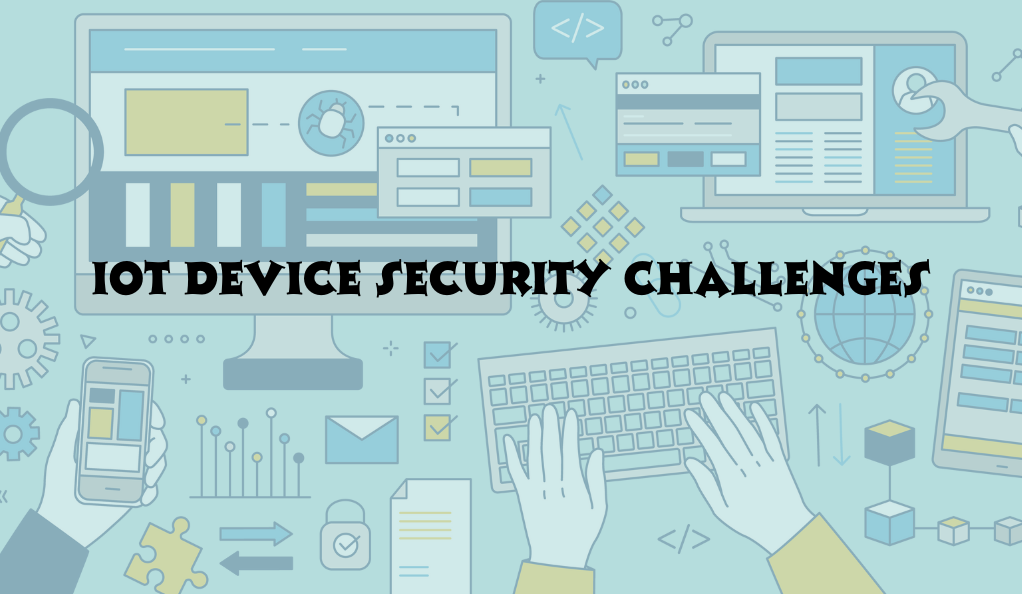The Internet of Things (IoT) has rapidly transformed the way we live, work, and interact with the world around us. From smart homes to connected cars, IoT devices are becoming an integral part of our daily lives. But what exactly are these devices, and why have they gained so much prominence in recent years?
What is IoT?
The term “Internet of Things” refers to the network of physical objects embedded with sensors, software, and other technologies that enable them to connect and exchange data with other devices and systems over the internet. These objects can range from everyday household items like refrigerators and thermostats to complex industrial tools.
The Rise of IoT Devices in Daily Life

Over the past decade, the adoption of IoT devices has skyrocketed. Here are some key statistics that highlight their growth:
- Estimated Number of IoT Devices: It’s projected that by 2025, there will be over 75.44 billion IoT devices installed worldwide. This is a significant increase from just a few billion devices a decade ago.
- Consumer Adoption: According to a recent survey, approximately 69% of consumers own at least one IoT device, with smart speakers, smart thermostats, and wearable health monitors being the most popular.
- Business Adoption: Businesses are also rapidly adopting IoT solutions. In industries like manufacturing, agriculture, and healthcare, IoT devices are being used to optimize operations, reduce costs, and improve customer experiences.
| Sector | IoT Application |
|---|---|
| Healthcare | Remote patient monitoring, smart inhalers |
| Agriculture | Precision farming, livestock monitoring |
| Manufacturing | Predictive maintenance, asset tracking |
The Increasing Cyberattacker Interest in IoT Devices
With the proliferation of IoT devices, they have inevitably become attractive targets for cyberattackers. Here’s why:
- Vast Attack Surface: The sheer number of devices, combined with their varied nature, provides a vast attack surface for malicious actors.
- Inherent Vulnerabilities: Many IoT devices are designed with functionality in mind, often sidelining security considerations. This makes them inherently vulnerable to attacks.
- High Stakes: IoT devices are often connected to critical systems. A breach could lead to significant financial, operational, or even physical harm.
The Vulnerability of IoT Devices
As the adoption of Internet of Things (IoT) devices continues to surge, so does the concern surrounding their security. These devices, ranging from smart home appliances to industrial sensors, play a crucial role in our interconnected world. However, their widespread use has also exposed a significant vulnerability – the security of IoT devices is often inadequate, leaving them susceptible to a wide range of cyber threats.
Over Half of IoT Devices Are Vulnerable
Recent studies have revealed alarming statistics about the security of IoT devices. One of the most concerning findings is that over 50% of these devices are vulnerable to medium and high-severity attacks. These vulnerabilities can be exploited by malicious actors to compromise the confidentiality, integrity, and availability of data and services provided by these devices.
Challenges of Current Security Solutions for IoT
The security landscape for IoT devices presents unique challenges that traditional security solutions struggle to address effectively. Here are some of the key challenges:
1. Lack of On-Device and In-Code Solutions
Unlike other areas of cybersecurity, where on-device (e.g., XDR) and in-code (e.g., RASP) solutions are routinely applied to protect endpoints and applications, IoT security has lagged behind in this regard. Manufacturers and operators often rely on perimeter defenses and security patches, which are reactive and not always sufficient to thwart sophisticated attacks.
2. Reactive Approach to Zero-Day Threats
A prevalent strategy for dealing with vulnerabilities in IoT devices is to release security patches after a threat has been identified. This reactive approach leaves devices vulnerable during the critical period between the discovery of a vulnerability and the release of a patch. Attackers can exploit this window of opportunity to launch successful attacks.
3. No Ongoing Visibility into Devices in the Field
Once IoT devices are shipped and deployed, manufacturers often lose visibility into their status and behavior. This lack of live monitoring makes it challenging to spot emerging issues, identify potential threats, and conduct effective root cause analysis in the event of security incidents.
4. Exposure to Third-Party Vulnerabilities
IoT devices frequently rely on third-party software libraries for essential functions such as communication, encryption, and authentication. Vulnerabilities within these third-party components can serve as entry points for attackers, making the entire device ecosystem vulnerable to exploitation.
5. Outdated Security Tools and Methods
Cryptography can be bypassed, and traditional static analysis and vulnerability discovery tools are often ineffective in detecting IoT-specific vulnerabilities. Perimeter-based protections and network segmentation, which have been the staples of IoT security, are limited in their ability to defend against attacks targeting IoT devices directly.
6. Lack of Shift-Left Approach to Security
Unlike cloud-native and application developers who have access to tools that enable them to integrate security into the development lifecycle of their products, IoT developers often lack such solutions. This results in security being added as an afterthought, rather than being built into the device from the ground up.
7. Balancing Security and Performance
IoT devices typically have resource limitations in terms of CPU, memory, and storage. This poses a dilemma for manufacturers, who must often choose between security and device performance. In some cases, security features may be sacrificed to ensure that devices function optimally.
Reactive Approach to Zero-Day Threats
One of the critical security challenges faced by IoT devices is the reactive approach taken to address zero-day threats. A zero-day threat refers to a vulnerability that is exploited by attackers before the software or hardware vendor becomes aware of it and can release a patch. This vulnerability is “zero-day” because there are zero days of protection available.
Reliance on Security Patches

Traditionally, the majority of device manufacturers have relied on security patches to address zero-day threats. When a vulnerability is discovered, the vendor rushes to develop and release a patch that can mitigate the vulnerability. However, this approach has several inherent flaws:
- Time Lag: The average time between the discovery of a vulnerability and the release of a patch can be several days or even weeks. During this time, attackers have the opportunity to exploit the vulnerability, potentially causing significant damage.
- Patch Management: Managing and distributing patches to a large number of deployed IoT devices can be a logistical challenge. Some devices may go unpatched, leaving them exposed to threats.
- Resource Constraints: IoT devices often have limited computing resources, making it challenging to apply patches without impacting device performance.
- Incomplete Coverage: Not all vulnerabilities are patched, and some devices may be end-of-life, with no patches available.
The Flawed Strategy
In the broader cybersecurity landscape, relying solely on security patches to address vulnerabilities is increasingly seen as a flawed strategy. It assumes that attackers will wait for patches to be released before attempting to exploit vulnerabilities, which is far from the reality of today’s cyber threat landscape.
Sophisticated attackers actively seek out and exploit zero-day vulnerabilities because they know that there is a window of opportunity before patches are available. This puts IoT devices at significant risk, especially when they are connected to critical infrastructure, such as smart grids or healthcare systems.
The Need for Proactive Zero-Day Defenses
To address the challenge of zero-day threats effectively, IoT security must evolve beyond the reliance on security patches. Proactive zero-day defenses, similar to those used in other cybersecurity domains, are needed. These defenses can include:
- Web Application Firewalls (WAFs): These can protect IoT devices from web-based attacks and zero-day exploits targeting web interfaces.
- Endpoint Detection and Response (EDR): EDR solutions offer real-time threat detection and response capabilities, helping identify and mitigate threats as they emerge.
- Extended Detection and Response (XDR): XDR solutions take a broader approach, integrating data from multiple sources to provide a more comprehensive view of threats.
By adopting these proactive defenses, IoT manufacturers and operators can reduce the window of vulnerability for their devices and enhance their overall security posture.
No Ongoing Visibility into Devices in the Field
Once Internet of Things (IoT) devices are manufactured and deployed, they enter the field and become part of the broader ecosystem. However, many manufacturers face a significant challenge: the lack of ongoing visibility into the status and behavior of these devices once they are in operation.
The Challenge of Device-Level Monitoring
Device manufacturers often lose direct visibility into their devices once they are shipped to customers or integrated into various systems. This lack of live monitoring creates several challenges:
- Spotting Emerging Issues: Manufacturers cannot easily identify emerging issues or vulnerabilities in their devices as they occur in the field. These issues may include performance problems, security threats, or operational inefficiencies.
- Effective Root Cause Analysis: In the event of a problem or security incident, manufacturers may struggle to conduct effective root cause analysis due to the absence of real-time data and insights.
- Loss of Control: Manufacturers lose control over the security and performance of their devices once they are in the hands of customers or integrated into third-party systems.
The Potential Consequences
The lack of ongoing visibility into devices in the field can have severe consequences for both manufacturers and end-users:
- Security Breaches: Undetected vulnerabilities or malicious activities in IoT devices can lead to security breaches, data leaks, and unauthorized access to critical systems.
- Loss of Trust: Security incidents can erode trust in IoT devices and the manufacturers behind them. Customers may hesitate to adopt IoT solutions if they perceive them as unreliable or insecure.
- Mass Recalls: In cases where a significant vulnerability or issue is discovered after devices are deployed, manufacturers may face the costly and disruptive process of recalling and updating devices.
- Operational Disruptions: Performance issues in IoT devices can disrupt operations, leading to downtime, delays, and financial losses.
The Need for Real-Time Device Monitoring
To address the challenge of ongoing device visibility, manufacturers must invest in real-time monitoring solutions. These solutions should provide granular insights into each device’s behavior, performance, and security status, even after deployment. Key features of effective device-level monitoring include:
- Real-time Data Collection: Continuous collection of data from IoT devices in the field, including performance metrics and security events.
- Alerting and Reporting: Automatic alerts and reports that highlight abnormal behavior, potential threats, or performance degradation.
- Remote Configuration: The ability to remotely configure and update device settings and security measures.
- Analytics and Insights: Data analytics capabilities that help manufacturers identify trends, anomalies, and potential areas for improvement.
By implementing real-time device monitoring, manufacturers can proactively identify and address issues, enhance security, and maintain the trust of their customers.
Exposure to Third-Party Vulnerabilities
Internet of Things (IoT) devices often rely on third-party software libraries for essential functions such as communication, encryption, authentication, and over-the-air (OTA) updates. While this reliance on third-party components can expedite device development, it also introduces a significant security challenge: the exposure to third-party vulnerabilities.
The Third-Party Software Supply Chain
The software supply chain for IoT devices involves the integration of various third-party libraries and components. These libraries come from a variety of sources, including open-source projects, commercial vendors, and in-house development. The IoT device manufacturer typically selects these libraries based on their functionality and compatibility with the device’s requirements.
Vulnerabilities in Third-Party Components
The challenge arises when vulnerabilities are discovered within these third-party components. These vulnerabilities can include software bugs, design flaws, or security weaknesses that can be exploited by attackers. The consequences of such vulnerabilities can be severe:
- Attack Surface Expansion: Vulnerabilities in third-party components expand the attack surface of IoT devices, providing attackers with additional entry points.
- Risk of Supply Chain Attacks: Malicious actors may attempt to compromise third-party libraries during the manufacturing or distribution process, leading to supply chain attacks.
- Complex Patch Management: Managing and applying patches to third-party components can be complex, especially when multiple libraries are involved.
Contributing to Attacks

It’s important to note that vulnerabilities in third-party components have contributed to a significant number of attacks on IoT devices. Attackers actively search for these weaknesses and exploit them to gain unauthorized access or control over devices.
Mitigating Third-Party Vulnerabilities
To mitigate the risk of third-party vulnerabilities, IoT device manufacturers should consider the following strategies:
- Continuous Monitoring: Continuously monitor third-party libraries for security updates and vulnerabilities. Many organizations and communities actively release patches and updates to address known issues.
- Patch Management: Develop a robust patch management process that ensures timely updates to third-party components. This process should include testing and validation to minimize disruptions.
- Supply Chain Security: Implement supply chain security practices to safeguard the integrity of third-party libraries during procurement and integration.
- Code Auditing: Conduct code audits of third-party libraries to identify potential security issues before they are integrated into IoT devices.
- Diversification: Consider diversifying the sources of third-party components to reduce the reliance on a single provider.
- Security Testing: Integrate security testing into the development lifecycle to identify vulnerabilities in both proprietary and third-party code.
Outdated Security Tools and Methods
The Internet of Things (IoT) security landscape is marked by a significant challenge: the continued use of outdated security tools and methods that are ill-suited to the evolving threat landscape. While cybersecurity has made strides in other areas, IoT security has lagged behind in adopting more effective and modern approaches.
The Limitations of Cryptography
One of the fundamental building blocks of security is cryptography, which involves using mathematical algorithms to encrypt and protect data. While cryptography plays a crucial role in securing IoT communications, it has limitations:
- Bypassing Cryptography: Attackers can find ways to bypass cryptographic protections through methods like side-channel attacks or exploiting implementation flaws.
- Encryption Alone is Insufficient: Encryption alone does not provide comprehensive security. It protects data in transit but does not address vulnerabilities within the IoT device itself.
- IoT-Specific Vulnerabilities: IoT devices often have unique vulnerabilities that cannot be mitigated solely through encryption.
Static Analysis and Vulnerability Discovery Tools
Traditional security tools such as Static Application Security Testing (SAST) and vulnerability discovery tools have been widely used in the cybersecurity industry. However, when applied to IoT devices, these tools face limitations:
- Incomplete Detection: SAST and vulnerability discovery tools may detect only a portion of vulnerabilities, leaving other security gaps unaddressed.
- Device-Specific Vulnerabilities: IoT devices may have specific vulnerabilities related to their hardware, firmware, or communication protocols, which traditional tools may not identify.
Perimeter Protections and Network Segmentation
Historically, many IoT security strategies have relied on perimeter protections and network segmentation. While these measures are essential, they have limitations:
- Limited to Connected Devices: Perimeter protections and network segmentation are effective primarily for devices connected to a network. IoT devices that operate in isolation (air-gapped) are not adequately protected.
- Missed Attacks on the Device: These measures often focus on protecting the network rather than the device itself. As a result, advanced attacks targeting IoT devices at the endpoint can go undetected.
The Need for Advanced Endpoint Protection
To address the unique security challenges posed by IoT devices, a shift toward advanced endpoint protection is required. This approach involves:
- Real-time Monitoring: Continuous monitoring of device behavior and security events in real-time to detect and respond to threats as they emerge.
- Behavioral Analysis: Analyzing device behavior patterns to identify anomalies that may indicate a security breach.
- Machine Learning and AI: Leveraging machine learning and artificial intelligence to enhance threat detection and response capabilities.
- Agentless Solutions: Lightweight, agentless solutions that can be easily embedded into resource-restricted IoT devices without compromising performance.
The IoT Security Evolution
As IoT security evolves, manufacturers and operators must adapt to these new approaches. The focus should shift from perimeter-based defenses to comprehensive, device-level protection. By adopting modern security tools and methods, IoT devices can become more resilient against emerging threats.
Lack of Shift-Left Approach to Security
In the world of software development, the “shift-left” approach to security has gained traction as a best practice. This approach emphasizes integrating security measures and considerations early in the development lifecycle of a product. However, when it comes to Internet of Things (IoT) devices, this shift-left approach is often lacking.
Shift-Left in Software Development
In traditional software development, the shift-left approach involves:
- Early Integration: Incorporating security practices and tools from the project’s inception, rather than as an afterthought.
- Testing and Assessment: Conducting security testing, code reviews, and vulnerability assessments during the development process.
- Continuous Monitoring: Implementing continuous monitoring and automated security checks to detect and address vulnerabilities as they arise.
This approach helps identify and mitigate security issues early in the development cycle, reducing the cost and impact of addressing vulnerabilities later.
Challenges in IoT Development

When it comes to IoT device development, several challenges hinder the adoption of a shift-left approach to security:
- Limited Security Tooling: IoT developers often lack specialized security tools and resources that can be easily integrated into their development processes.
- Resource Constraints: IoT devices, particularly those with limited computational resources, may struggle to accommodate security measures without compromising performance.
- Legacy Devices: Retrofitting security into legacy IoT devices that were not originally designed with security in mind can be challenging.
- Complex Ecosystem: The IoT ecosystem can be complex, with diverse hardware, software, and communication protocols. Ensuring security across this ecosystem can be daunting.
The Importance of a Shift-Left Approach
Despite these challenges, a shift-left approach to security is essential in IoT device development. Here’s why:
- Security by Design: Embedding security from the beginning reduces the likelihood of introducing vulnerabilities during the development process.
- Cost-Efficiency: Addressing security issues early in the development cycle is more cost-effective than fixing them after deployment.
- Risk Mitigation: Early identification and mitigation of security vulnerabilities reduce the risk of data breaches, attacks, and operational disruptions.
- Compliance and Trust: Demonstrating a commitment to security can help IoT manufacturers meet regulatory requirements and build trust with customers.
Integrating Security into IoT Development
To embrace a shift-left approach to security in IoT development, manufacturers can take several steps:
- Security Training: Provide training and education to IoT developers on security best practices and threats specific to IoT devices.
- Security Tools: Invest in or develop security tools that are tailored to IoT development needs, making them accessible and easy to integrate.
- Secure Coding Guidelines: Establish secure coding guidelines and standards for IoT development teams to follow.
- Continuous Testing: Implement automated security testing throughout the development lifecycle, including code analysis and vulnerability scanning.
- Threat Modeling: Conduct threat modeling exercises to identify potential security threats and vulnerabilities early.
By integrating security into the development process and fostering a security-first mindset, IoT device manufacturers can build more resilient and secure products.
Balancing Security and Performance
Internet of Things (IoT) devices come in various forms, from small sensors to complex industrial machines. One of the central challenges in IoT security is finding the right balance between security measures and device performance. This delicate equilibrium is vital to ensure that IoT devices both function optimally and remain resilient against evolving threats.
Resource Constraints of IoT Devices
Many IoT devices operate with limited computational resources, including CPU power, memory, and storage. These constraints can make implementing robust security measures challenging, as security functions can be resource-intensive.
The Security-Performance Trade-Off
Balancing security and device performance involves navigating a complex trade-off:
- Security Requirements: Robust security often requires encryption, authentication, continuous monitoring, and regular updates—all of which demand additional processing power and memory.
- Device Efficiency: IoT devices are designed to perform specific tasks efficiently, and any overhead from security measures can impact their performance.
- User Experience: In consumer IoT, a positive user experience is critical. Slow or resource-intensive security measures can frustrate users and hinder device adoption.
Compromises Made by Manufacturers
To address the resource constraints while maintaining security, IoT manufacturers sometimes make compromises:
- Reduced Encryption: Manufacturers may opt for less resource-intensive encryption algorithms, potentially sacrificing security.
- Limited Functionality: Some security features may be omitted to reduce device complexity and conserve resources.
- Infrequent Updates: Due to the challenges of updating resource-constrained devices, manufacturers may release updates less frequently, leaving devices vulnerable to emerging threats.
The Need for Lightweight Security Solutions
To strike a balance between security and performance, IoT manufacturers are increasingly turning to lightweight security solutions. These solutions are designed to provide effective security measures without imposing excessive resource overhead. Key components of lightweight security solutions include:
- Efficient Cryptography: Optimized cryptographic algorithms that provide strong security while minimizing computational requirements.
- Low-Impact Monitoring: Security monitoring solutions that operate efficiently and provide real-time threat detection without consuming excessive resources.
- Firmware Management: Streamlined firmware update mechanisms that minimize downtime and bandwidth usage.
- Resource-Adaptive Measures: Security measures that can adjust their level of intensity based on available resources.
Conclusion
In this article, we’ve examined the diverse challenges of IoT device security, encompassing vulnerabilities, zero-day threats, limited post-deployment visibility, third-party risks, outdated methods, development practices, and performance-security trade-offs.
To tackle these issues, innovative solutions are vital. Proactive defenses, real-time monitoring, third-party risk management, modern security tools, a security-first development approach, and lightweight security solutions are essential.
Looking forward, securing IoT devices remains a dynamic challenge requiring collaboration between stakeholders. The future of IoT security hinges on continuous innovation and adaptation to harness IoT benefits while mitigating risks. In sum, understanding and addressing these challenges are critical for IoT to thrive securely.








